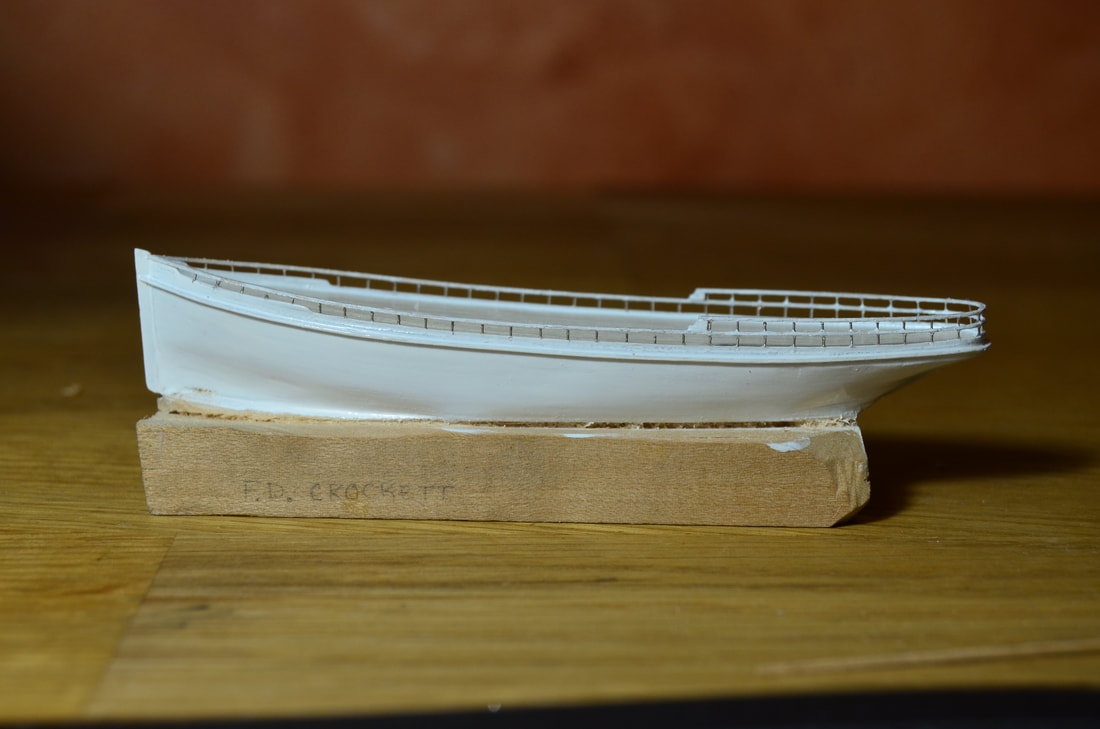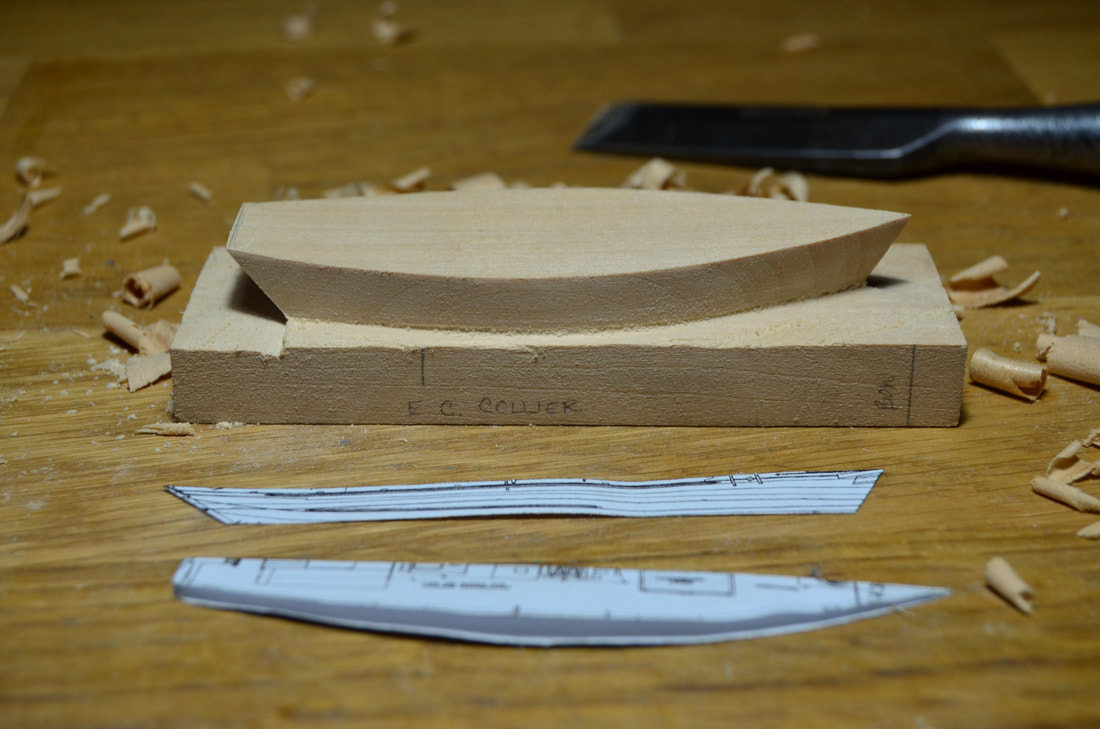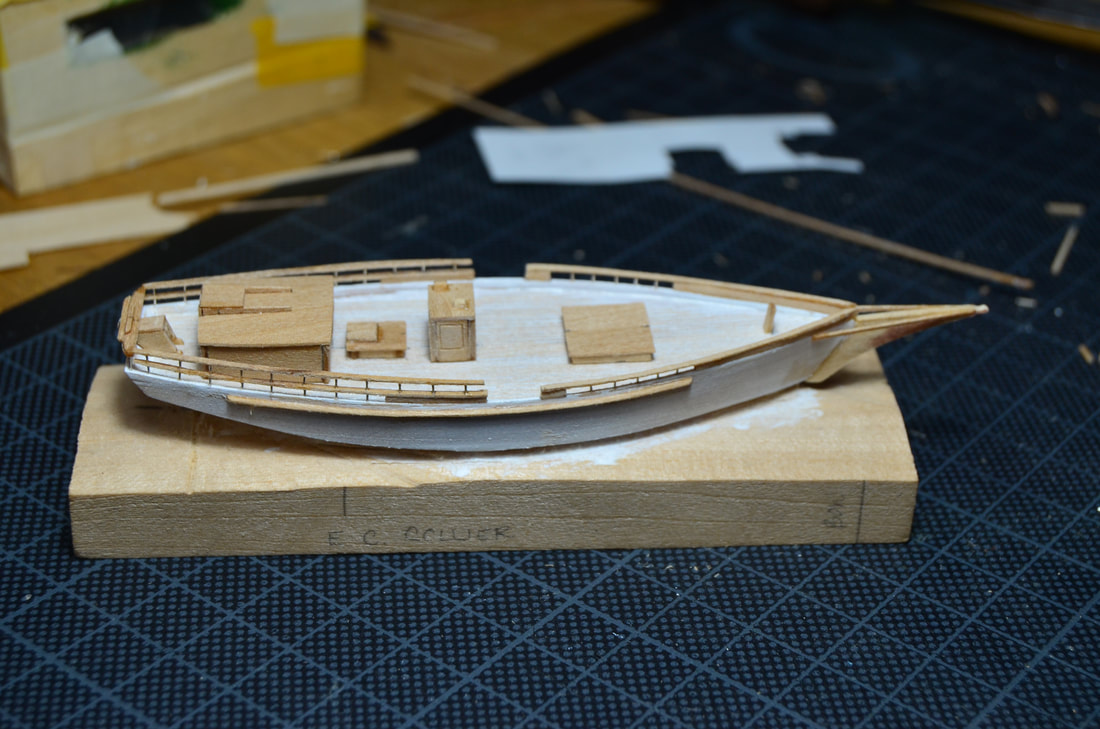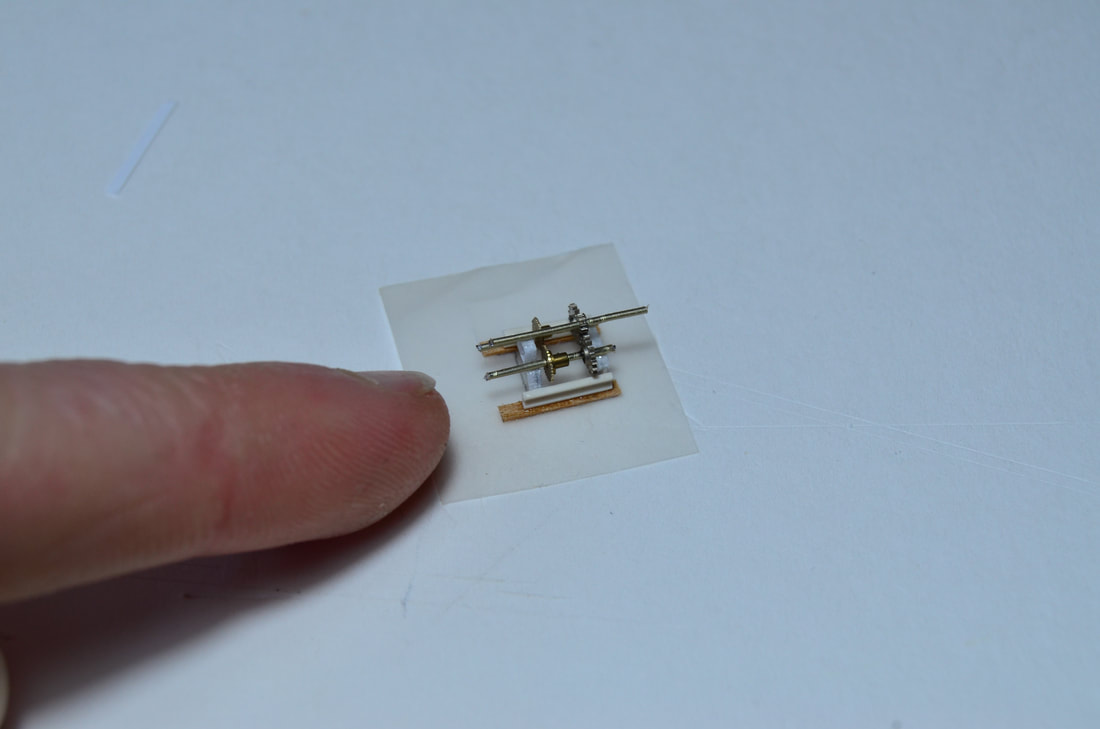|
Snow fell yesterday and I watched the big fluffy flakes falling to ground, happy to be warm and cozy and sitting in front of my active little boatyard, the construction of my small fleet of Chesapeake boats progressing everyday. The F. D. Crockett has gotten a few coats of paint and I began installing the railing. It's a time consuming task accomplished by hand drilling tiny little holes in the bulwark with a 0.3 mm drill bit. I then insert the vertical stanchions and cut them to length, using a strip of card stock (a hair less than a millimeter in width) and some flush cutting nippers. The wooden railing, made of basswood, is less than a millimeter wide, and I had to cut it to shape it and carefully glue it to the tips of the stanchion posts. The round stern proved difficult and is fabricated from a few pieces of wood scarfed together. Once it was done, I gave her a nice coat of paint and set her aside to work on the next boat. I was eager to make a little progress on the Hooper Island Dovetail, and continued by installing the ribs on the previously carved out hull. The deck was laid on as one piece, with the cockpit and cabin space cut away, and I gave her a fine, wood rub-rail all the way round. The cabin was fabricated from .5 millimeter basswood strips (part of my stock of wood that my lovely husband machines for me from time to time). It was built from the floorboards up and is completely open in the interior. With a couple coats of satin white paint (we don't want shiny work boats), she was as pretty as a new penny. Waiting for paint to dry can nearly drive me nuts and while my Crockett and Dovetail, got one super fine coat of paint after another and were placed high up on the shelf out of the dusty boatyard, I had to get busy on another boat. When I visited Chesapeake Maritime Museum in St. Michaels Maryland, I was inspired by their Oystering on the Chesapeake exhibit in which the E. C. Collier is permanently displayed. You can board the boat and listen to the voices of watermen pulling up the dredges and sorting the oysters. Everything is there to see, the motor driven winder, the steering wheel with exposed gears, the dredge baskets, etc... The deck is warn and used, and you can observe the simplistic but rugged way in which a 107 year old skipjack was built. It's a huge inspiration to have access to exhibits like this, accessible to the public. So, I started building my miniature E. C. Collier by marking off the block of wood. I carved her shear first, then rough cut the shape of the hull with a handsaw before carving the shape of the hull. I made sure to mark off the chine were the cross planked, dead-rise bottom would meet the sides. Once, I got the shape of the hull just right, I added the bulwarks, leaving space for the dredge rollers on each side. I etched the deck planking into a piece of .5 millimeter basswood pre-cut to fit the deck and attached the long bowsprit support, unique to boats of the Chesapeake, on which will be the attractively painted trailing board with the name. Next came the railings, fabricated in the exact same method as the Crockett and then the sampson post, forward hatch, winder motor box, central hatch, main cabin and stearing box. One of the most important features on the Skipjack is the winder. This machine was used to raise the dredges that scrape the bottom of the Bay for oysters. Being in Switzerland, the watch making capital of the world, I've accumulated lots of watch gears and used them to represent the winder gears. Fabricating this tiny feature took the most part of the day. I gave it a weathered coat of paint and glued it in place on-board. One part of the boat that I was very proud of accomplishing was the rudder and I haven't painted it yet, since I wanted you all to see how it's built. The rudder is wood and their are two flat metal straps that wrap around the forward edge of the rudder creating a half hoop. On the transom I inserted to metal wires bending them at ninety degrees and lowered the rudder down and in place, just like on a real boat. It actually moves!
So here is the big question for you guys. I will paint the rudder white as was typical and the hull will get a weathered appearance, but should I put another coat of paint on her hull? I'm scared to make her look too clean, she is a work boat after all! Well that's all for now. Be sure to stop by in future to catch up on my winter project in my mini boatyard...next up, the Bugeye, Edna E. Lockwood.
6 Comments
Dan
2/3/2018 03:38:24 pm
I would og for the extra layer of paint. And then weathering it a bit. And if dryingtime is an issue - try The warhammer spraycans. They are made for tiny deatails - and dries almost instantaneously.
Reply
Bil Hardenberger
2/23/2018 02:13:48 am
Beautiful. Lived in Easton for several years and my ex-business partner still lives in St. Michaels so am very familiar with these boats. But where is the Log Canoe? ;)
Reply
Gabrielle
3/18/2018 09:19:00 pm
I was just talking to my husband yesterday about the log canoe...I think I am going to have to build one! A classic Chesapeake scene isn't complete without one, haha!
Reply
Leave a Reply. |
Details
AuthorHeather Gabrielle Rogers: Shipwright for bottled miniature models. Archives
March 2018
Categories |














 RSS Feed
RSS Feed